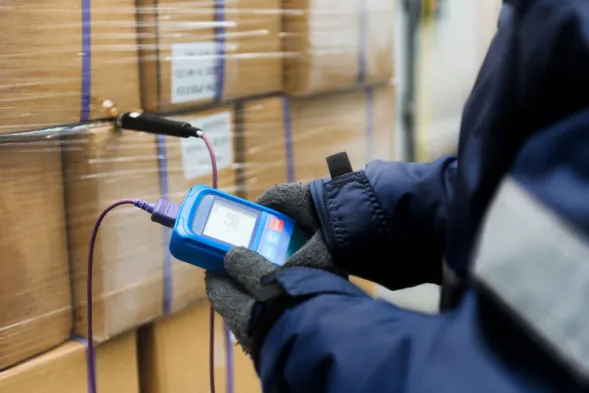We’ve pulled together 4 tips for shipping temperature-controlled items. COVID-19 has surely had an impact in so many ways. We have all seen the empty shelves at the stores, and the demand for temperature-controlled items to be in stock has greatly increased. There’s a lot that goes on behind the scenes in getting these sensitive, essential items to you. Not to mention that spring has arrived, and that means many industries, like produce, are ramping up productivity.

Use the Right Packaging For Shipping Temperature-Controlled Items
Items such as produce, food, and pharmaceuticals are perishable and must remain at a specific temperature during transit. In addition, they require special handling. As with all things shipping, proper freight packaging is one of the most important steps, but it is even more important with sensitive items.
When packing your temperature-sensitive package, keep the following points in mind:
- – Sturdy insulated foam containers work well for food, flowers, and frozen items.
- – Pack all foam coolers and planks within new sturdy corrugated boxes.
- – The thicker the foam, the less coolant you’ll need.
- – Insulated foam planks, thermal bubble wrap, and other sturdy items need less cooling.
- – Hire professionals to package any healthcare shipments that must maintain a specific temperature.
- – Choose a thermostat-controlled refrigerated (TCP) container for especially sensitive shipments. An internal power source powers it.
No matter what kind of temperature-sensitive items you may be shipping, there are certain types of items you may need on hand. Here is a simple list of items you may need when shipping any kind of temperature-controlled freight:
- – New corrugated box
- – Refrigerant (gel packs, dry ice)
- – Insulation (foam cooler, foam planks, thermal bubble wrap)
- – Cushioning (bubble wrap, packing peanuts, foam)
- – Temperature-monitoring device
- – Labels for hazardous materials (including dry ice)
For more information on other types of freight packaging, be sure to download our free Guide to Freight Packaging, you can explore your options and choose the packaging method that works best for your shipments.


